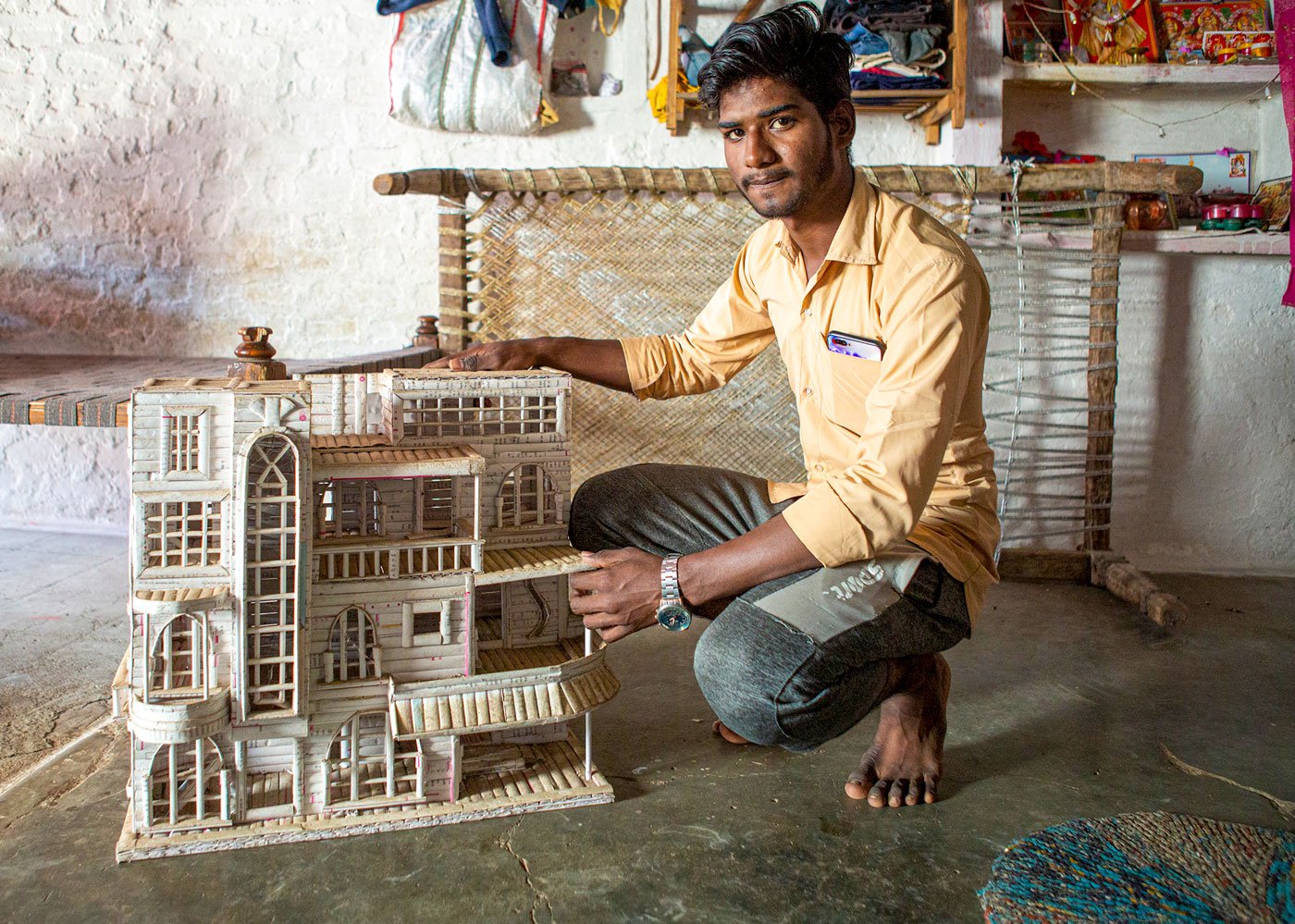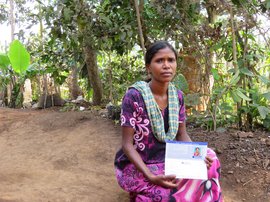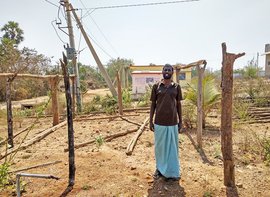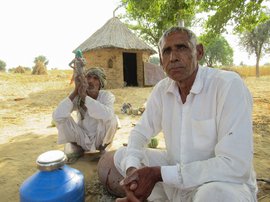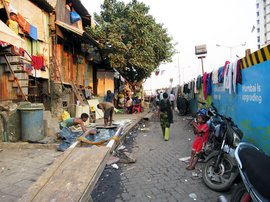In Jaypal’s two-room brick house with a tin roof, there are several other more grand houses. These have multiple floors, tall columns, balconies and turrets.
And they are made of paper held together by glue.
For the last 4-5 years, Jaypal Chouhan, 19, has been spending some of his mornings and afternoons at home in Karoli – his village in Khandwa district of Madhya Pradesh – carefully rolling paper tubes and placing them on top of each other like a stack of bricks to make walls, then joining them together with glue to create castle-like structures.
“I have always been interested in buildings and how they are constructed,” he says.
Jaypal began with making cardboard models of temples when he was around 13. He had attended a wedding in another village where he saw a small glass temple in someone’s house – and that intrigued him enough to try and put together one of his own using cardboard. He made a few, gifted them to relatives, and even won a prize for a model at a school exhibition in 2017.
He also won a prize in school for a cardboard motorbike. And his collection of such items includes a table fan, a race car, and a crane with wheels taken from an old toy.

Jaypal with one of his paper creations; he also designs doors made by his father Dilawar Chouhan (right), a carpenter
“But over time the
cardboard started to bend due to humidity,” Jaypal says. “Then one day I
thought I would make better use of old [school] books kept in the house to be
sold off as scrap. It was a sudden idea. I started rolling their pages into
tubes and making these big [house] models.”
The new cement houses being
constructed in Karoli, his village in Punasa
tehsil
,
are his starting point for ideas. “The people who are making new houses are
inside the village, while we [his family], and those who work on other’s fields
are outside the village and still live in
kaccha
houses,” Jaypal says. “But I don't like
the designs of any of the cement houses fully. So I mix and match two-three
ideas. If the designs are simple, then it looks very plain, but if it’s an
unusual design then I like to make it into a paper model.”
He looks for houses that don’t have just standard
doors and windows but are embellished with cut-outs and ornamentation. For one of
the models that he adapted, he says, “I made the top floor like a house in the
village but the ground floor is different.” This design was inspired by the house
of a local teacher who gave him waste notebooks from his school. But these had numerous
pictures and cartoons, which Jaypal says looks odd on the paper models. So he
got got old books and notebooks from another nearby government school.
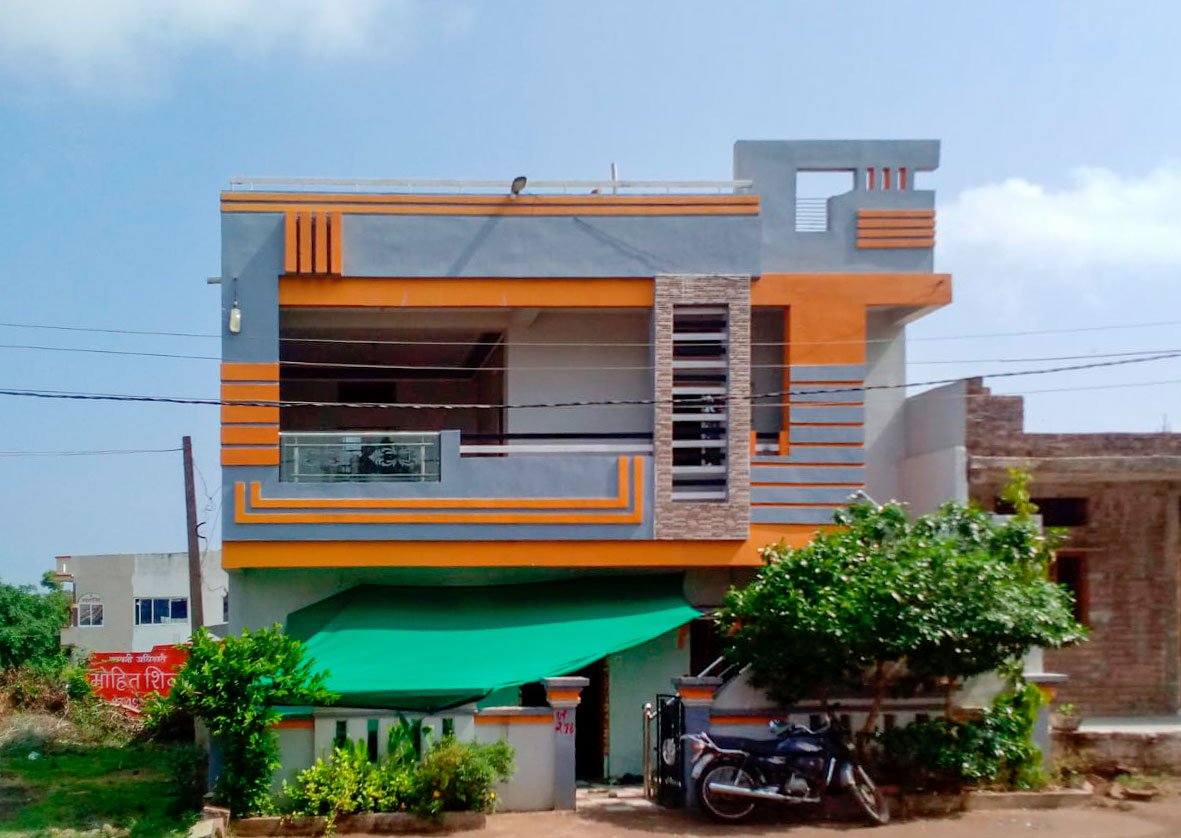
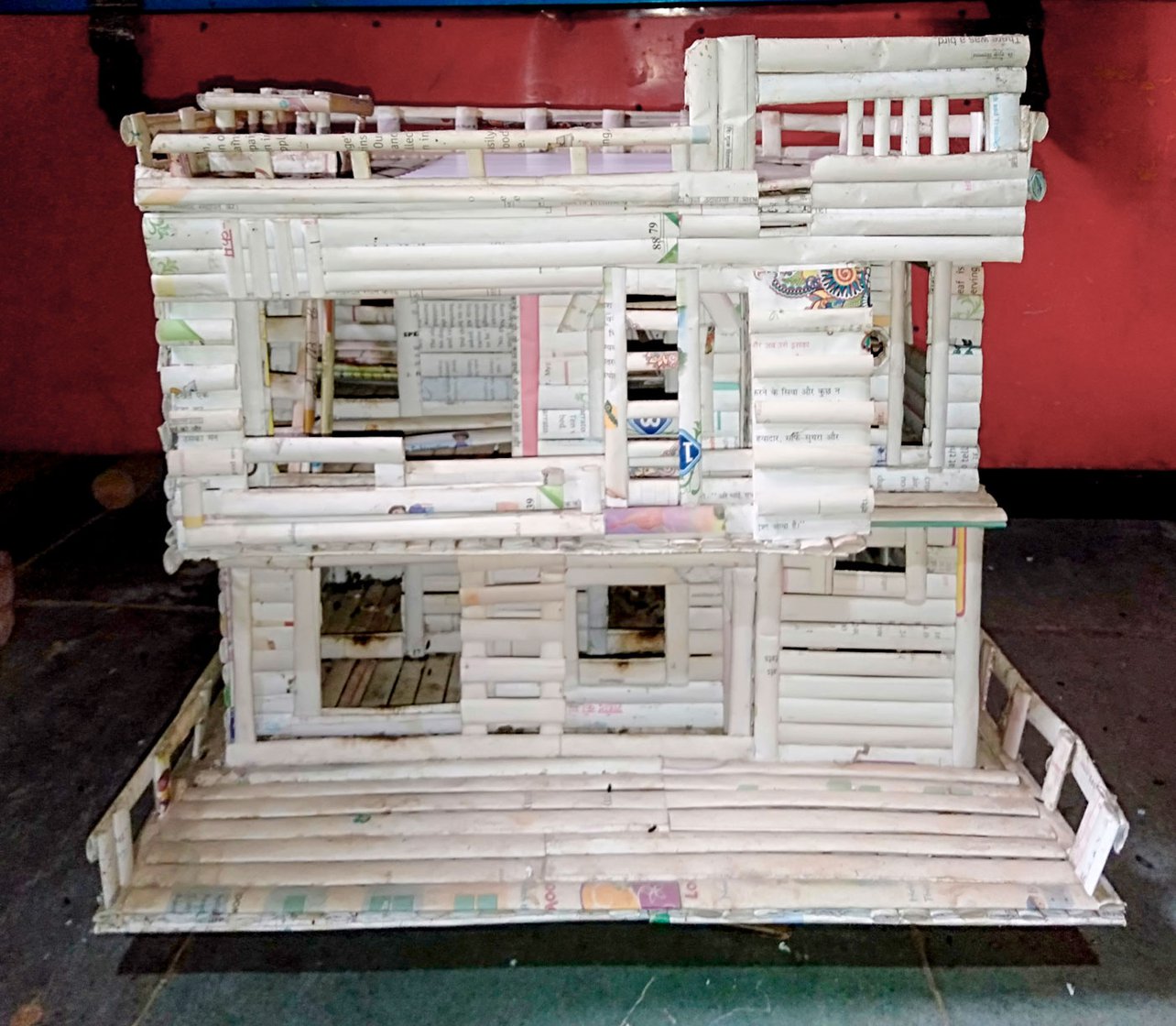
He looks for houses that have some ornamentation. This design (right) was inspired by the house (left) of a local teacher who gave him old notebooks
Depending on the intricacy of the model,
and the time he gets to work on them, it takes Jaypal anything between 4 and 20
days to create a house out of paper – each around 2 x2 feet in height and
depth, with a width of around 2.5 feet.
When not creating
castles, Jaypal studies – he recently completed Class 12 [online
during the pandemic] at a school in a nearby village. And he works with his
father, Dilawar Singh Chouhan, 45, a carpenter who makes tables, chairs, swings
for kids and other furntiure, as well as door frames and thresholds (
chaukhats
) in Karoli and in neighbouring
villages and towns.
Jaypal says he is not interested in woodwork, but he helps with the designs of the doors and windows, with handling the tools and fixing corrugated roofs. “I have designed three doors in a nearby village, two in Karoli,” he says. “I take many references from the internet and online magazines and try to make a unique design – at times on paper, but most of the time directly on the wood – and my father then makes it.”
At other times, Jaypal also works with brother-in-law
(sister’s husband), a tailor in a village around 60 kilometres away. He occasionally goes there
and pitches in with cutting fabric or sewing trousers.
Japypal’s mother, Raju Chouhan, 41, is a homemaker. In the past, she too worked on tasks in the family’s carpentry trade. “If they were making a charpoy , she used to make the legs while my dad worked on everything else,” Jaypal says. But the family’s economic condition has since somewhat improved, and she does not do this work anymore.


Japyal's collection of hand-made items includes a table fan; he also designs some of the doors that his father makes in wood
His
mamaji
(uncle), Manohar Singh
Tanwar, a farmer, supported Jaypal’s model-making the most. He used
to live next door and brought all his guests to show them his nephew’s work. This uncle passed away last year, possibly due to dengue.
Both Dilawar and Raju
too support their son’s dedication to model-making. “I am not literate but I think he is on the right path, and
many people come and see his work,” Dilawar says. “I want him to study for as
long as he can and I will support him in whatever way I am capable of. I tell
him that even if I have to sell my land and house to support his studies, I
will. Because land can come again but his time to study won’t.” Raju simply
tells me: “Please take care of him. We don’t have much, he is the only child
with us, his [two] sisters are married."
While
Jaypal models now adorn their home, his family’s journey is marked by displacement.
In 2008, they had to leave Toki, their village around three
kilometres from
Karoli, when it was to be submerged by the overflow of the Omkareshwar dam.
The family was asked to relocate to another village around 10 kilometres away, but Dilawar refused to move there because it was remote and barren. “There were no shops there either, there was no work,” Jaypal says. His father then bought a small plot in Karoli with the compensation given by the government. That's the house they are living in now. Dilawar also inherited two acres of land from his father, located around 80 kilometres from Karoli, where the family cultivates mainly soyabean, wheat and onions.
!['I don't make any [architectural] plans or designs, I just start making the houses directly', Jaypal says. The first few were gifted to relatives, but when people started visiting his home to look at the models, he stopped giving them away](/media/images/05a-NP.max-1400x1120.jpg)
!['I don't make any [architectural] plans or designs, I just start making the houses directly', Jaypal says. The first few were gifted to relatives, but when people started visiting his home to look at the models, he stopped giving them away](/media/images/05b-NP.max-1400x1120.jpg)
'I don't make any [architectural] plans or designs, I just start making the houses directly', Jaypal says. The first few were gifted to relatives, but when people started visiting his home to look at the models, he stopped giving them away
Jaypal
has only a faint memory of the modest mud-and-tin house of his birth in Toki
village. “I don't remember it much. Now when I am making models,
I can't go back to see it because it's submerged. But I am thinking of making a
model of my present, small house.”
The
family could however could be displaced from this house too because the plot of
land is near a street that the government reportedly has plans to expand into a
six-lane road. “We will then have to once again go somewhere else,”
Jaypal says.
He is planning to study further and wants to become a civil engineer because of his interest in building structures, and due to the prospects of getting a government job with that qualification.
Recently, he has started making a model of the Taj Mahal. “Anyone who came to our home and saw the models would ask me if I've made Taj Mahal or not,” he says. It will require a lot of paper – but the grand monument is taking shape. And over time other replicas will emerge too – each one created with skill and patience, and glue and loads of discarded paper.
This story is part of a series of 25 articles on livelihoods under lockdown, supported by the Business and Community Foundation.
